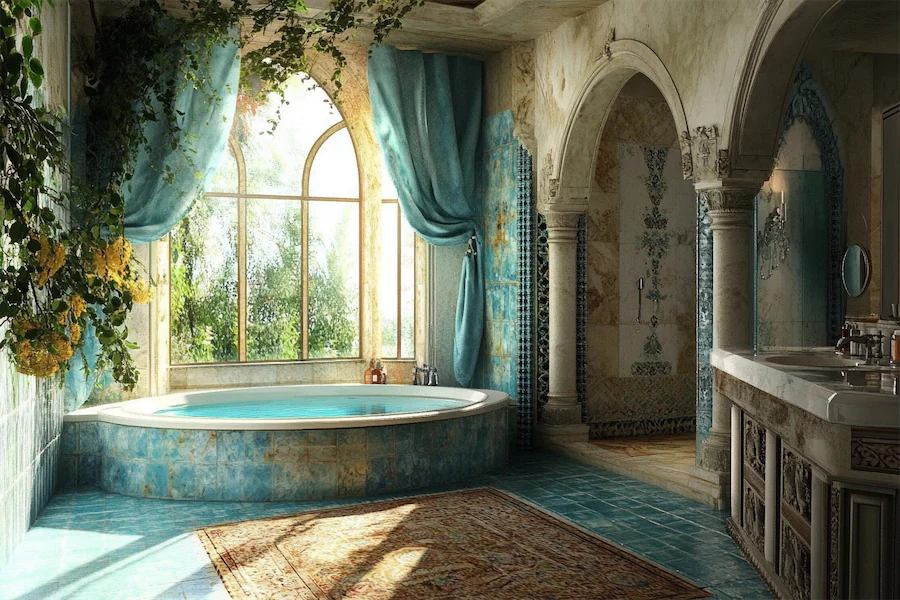An artistic bathroom transforms a utilitarian space into a personal sanctuary, reflecting individual style through creative design elements. This article explores the history, key features, applications, considerations, and concludes with insights into artistic bathrooms.
Introduction to Artistic Bathrooms
An artistic bathroom incorporates unique design elements—such as bold color schemes, innovative fixtures, and curated artwork—to create a space that is both functional and aesthetically pleasing. This approach allows for personal expression and elevates the bathroom experience beyond mere utility.
History and Origins of Artistic Bathrooms
The evolution of bathroom design has transitioned from purely functional spaces to areas of luxury and self-expression. In the early 20th century, the Art Deco movement introduced bold geometric patterns and lavish materials into bathroom design. Today, artistic bathrooms draw inspiration from various art movements and personal tastes, resulting in eclectic and individualized spaces.
Key Features of Artistic Bathrooms
- Bold Color Schemes: Utilizing vibrant or contrasting colors can make a dramatic statement. For instance, incorporating large-scale art or colorful tiles can add visual interest and reflect personal style.
- Unique Fixtures and Materials: Selecting distinctive sinks, bathtubs, or hardware crafted from unconventional materials adds an artistic touch. Mixing modern and vintage pieces can achieve a curated look with vintage accents while maintaining functionality.
- Incorporation of Artwork: Displaying paintings, sculptures, or decorative objects transforms the bathroom into a gallery-like space. Artwork introduces a unique dimension, making the space more personalized and engaging.
- Creative Lighting: Implementing statement lighting fixtures or utilizing natural light creatively enhances the artistic ambiance. For example, adding ambient light sources like wall sconces and dimmer switches can create a soothing atmosphere.
Applications of Artistic Bathrooms
- Residential Homes: Homeowners can express their personal style by incorporating artistic elements into their bathroom design, creating a unique and personalized space.
- Boutique Hotels: Artistic bathrooms in boutique hotels offer guests a memorable and immersive experience, reflecting the establishment’s brand and aesthetic.
- Luxury Spas: Incorporating art and unique design elements in spa bathrooms enhances the sense of luxury and relaxation for clients.
Considerations When Designing an Artistic Bathroom
- Cohesiveness: Ensure that the artistic elements align with the overall design theme of the home to maintain visual harmony.
- Functionality: While focusing on aesthetics, it’s crucial to maintain the practicality and usability of the bathroom fixtures and layout.
- Maintenance: Some artistic materials or fixtures may require special care; consider the upkeep involved in maintaining the space.
- Budget: Artistic designs can vary widely in cost; establish a budget to guide the selection of materials and fixtures.
Conclusion
An artistic bathroom serves as a canvas for personal expression, blending functionality with creative design. By thoughtfully selecting colors, fixtures, artwork, and lighting, one can transform a standard bathroom into a unique and inspiring space that reflects individual style and enhances daily routines.
